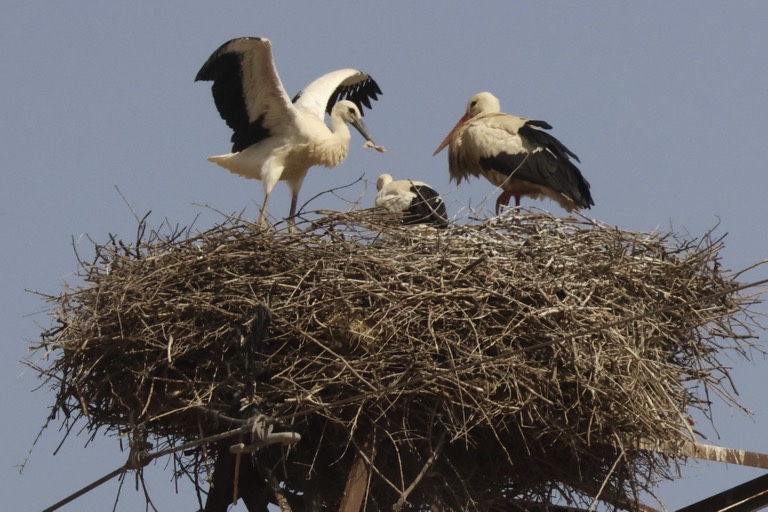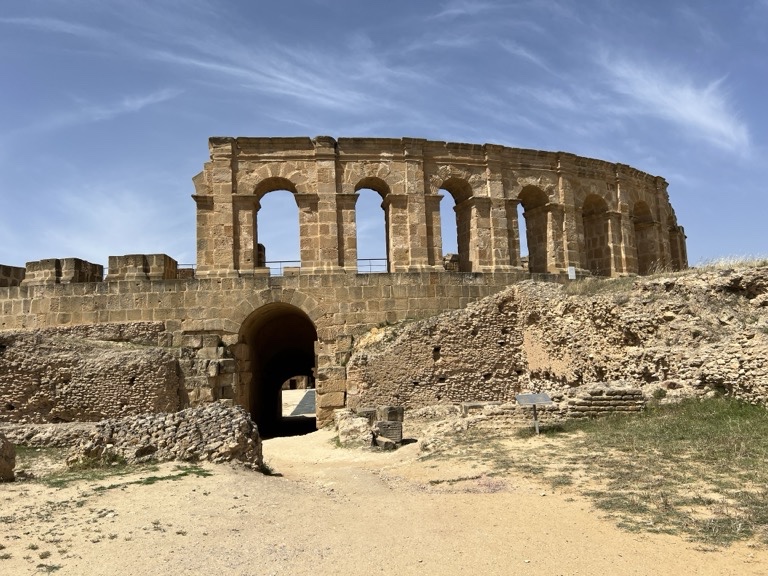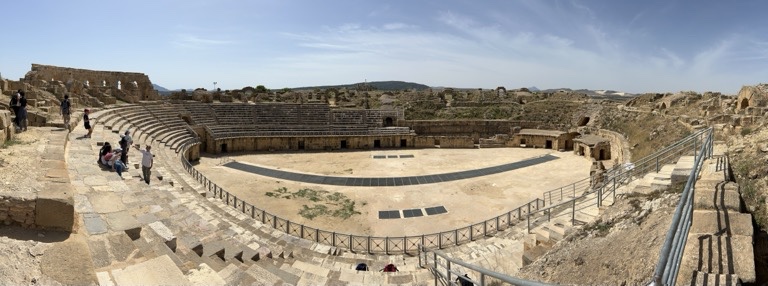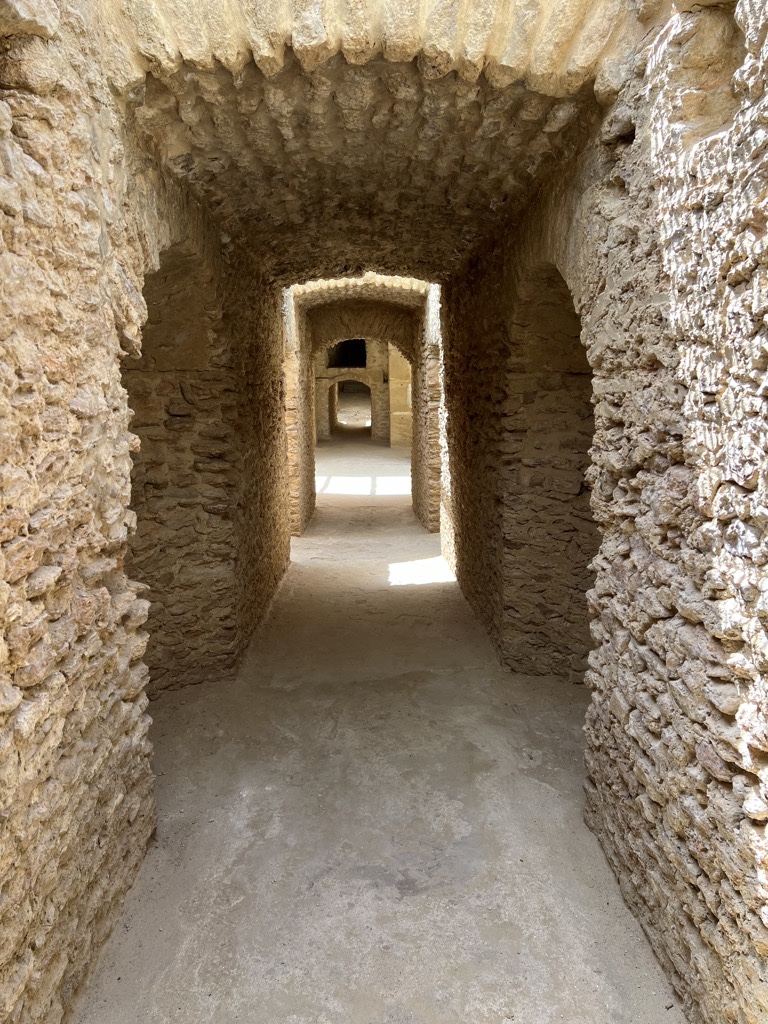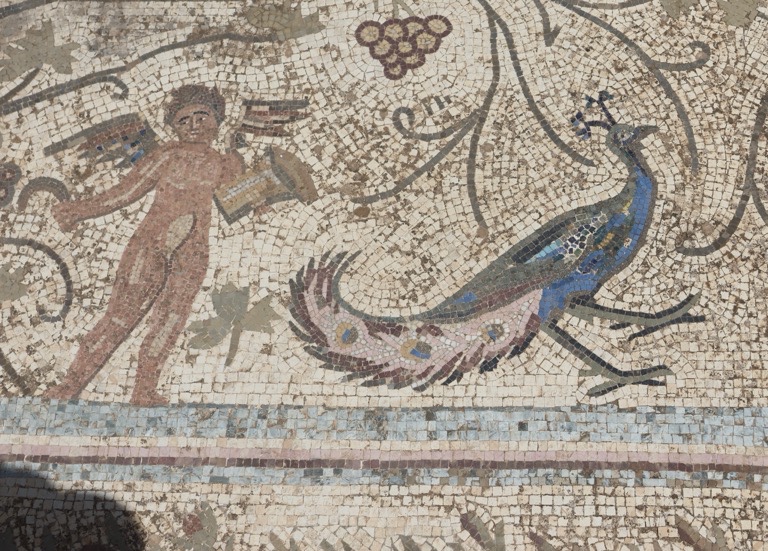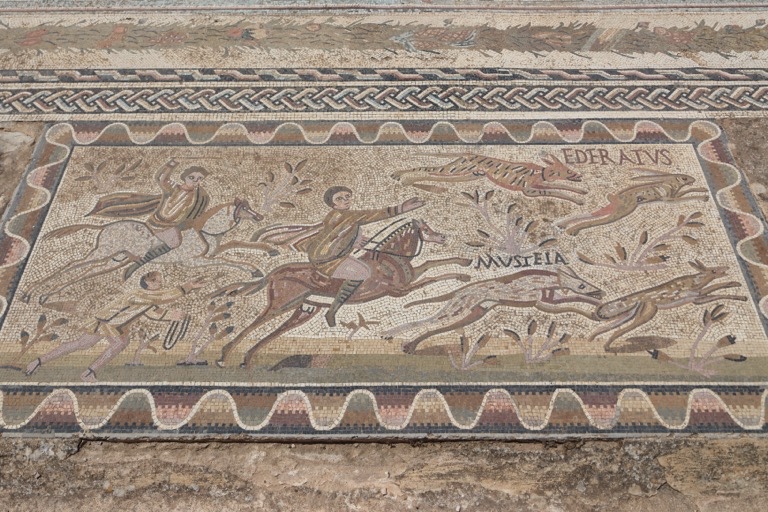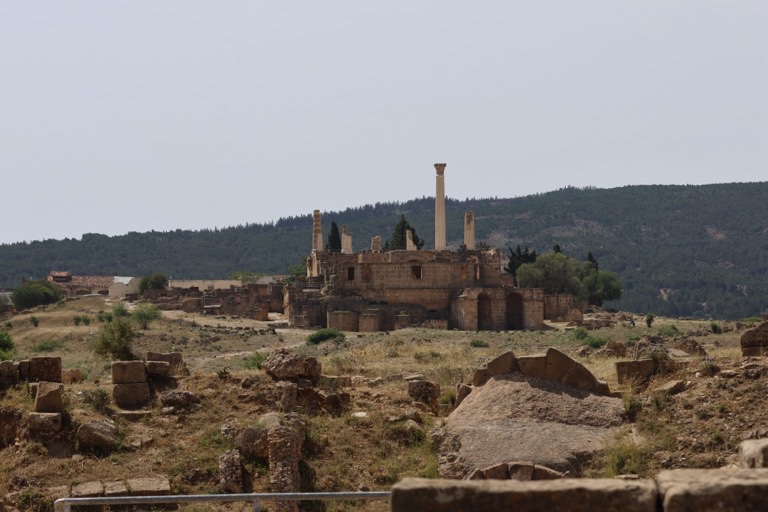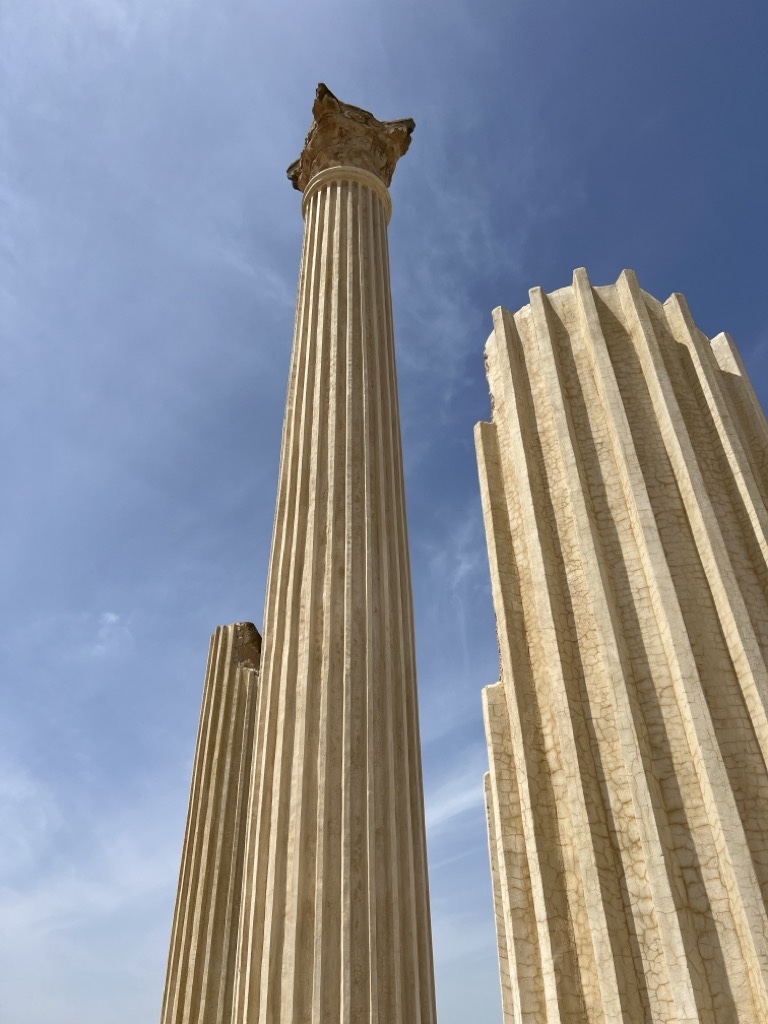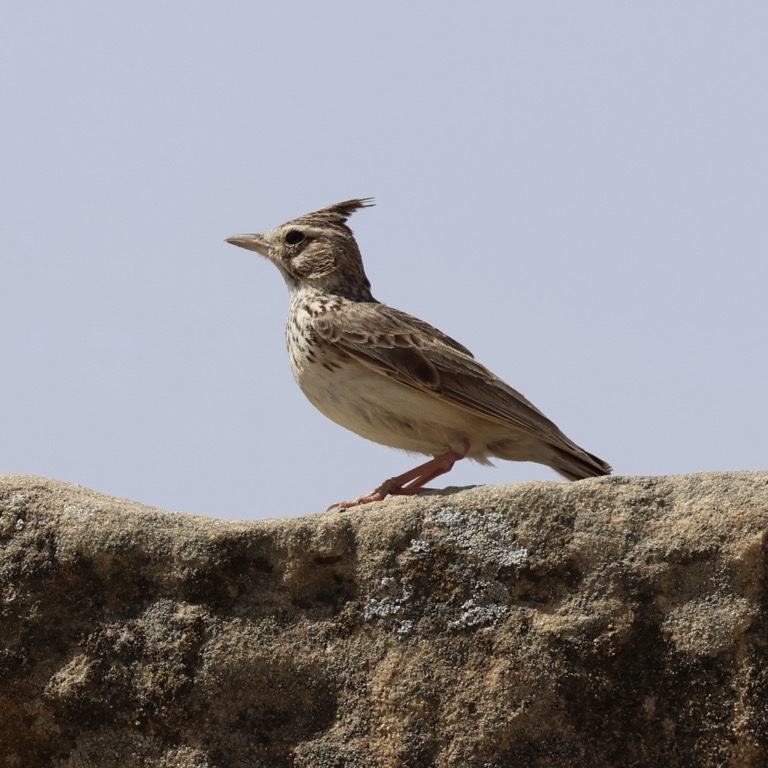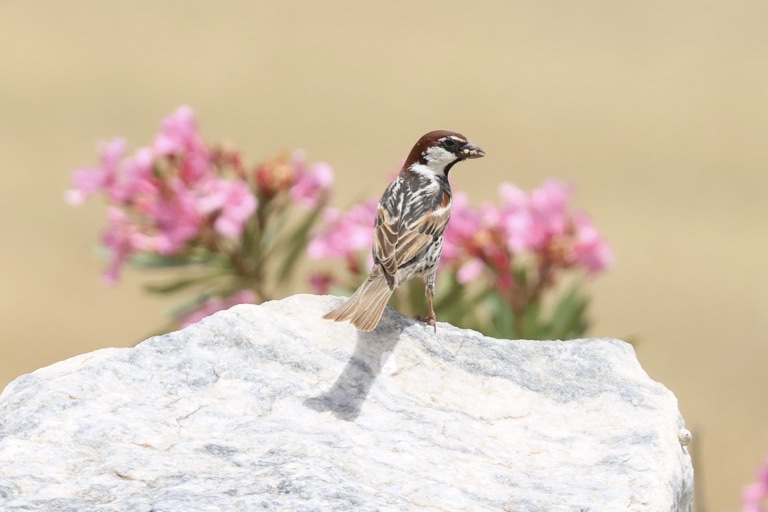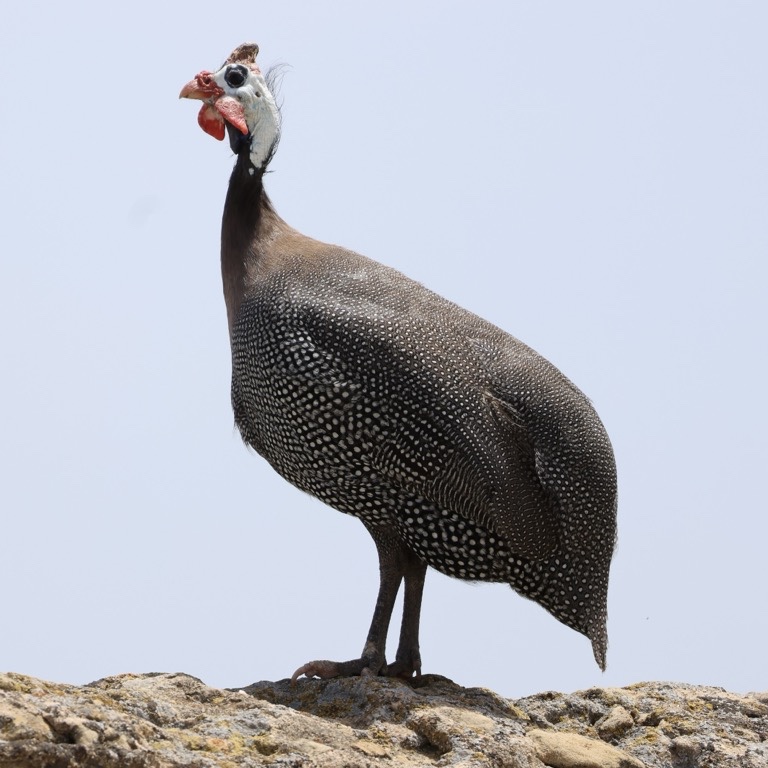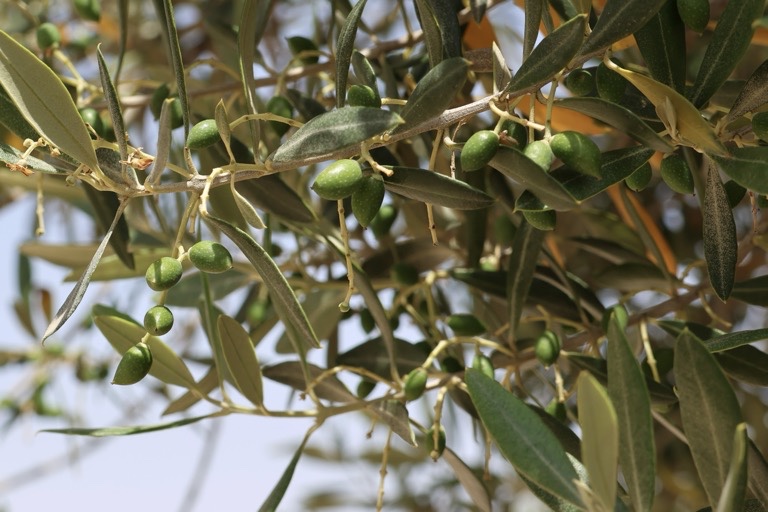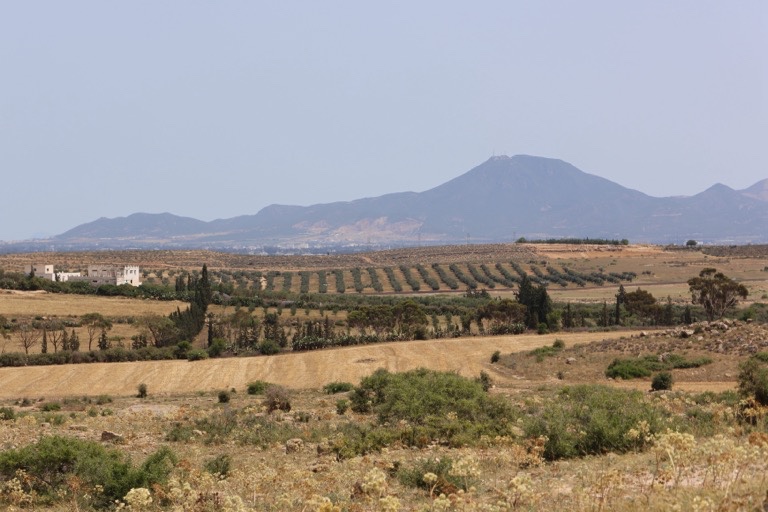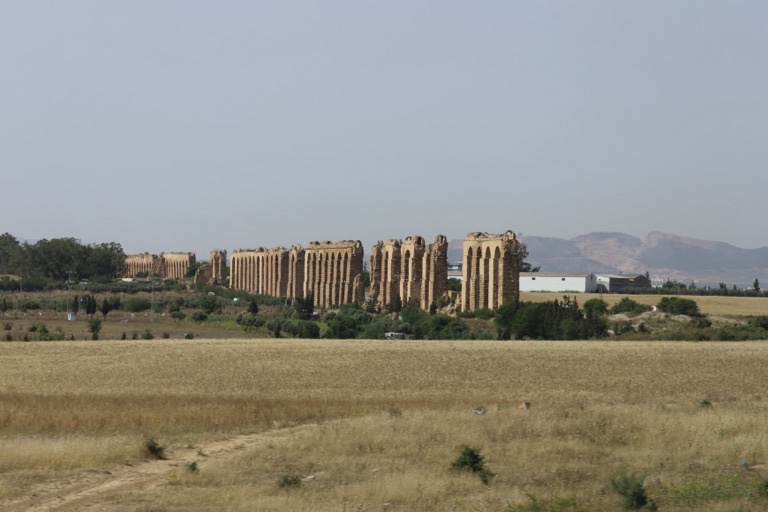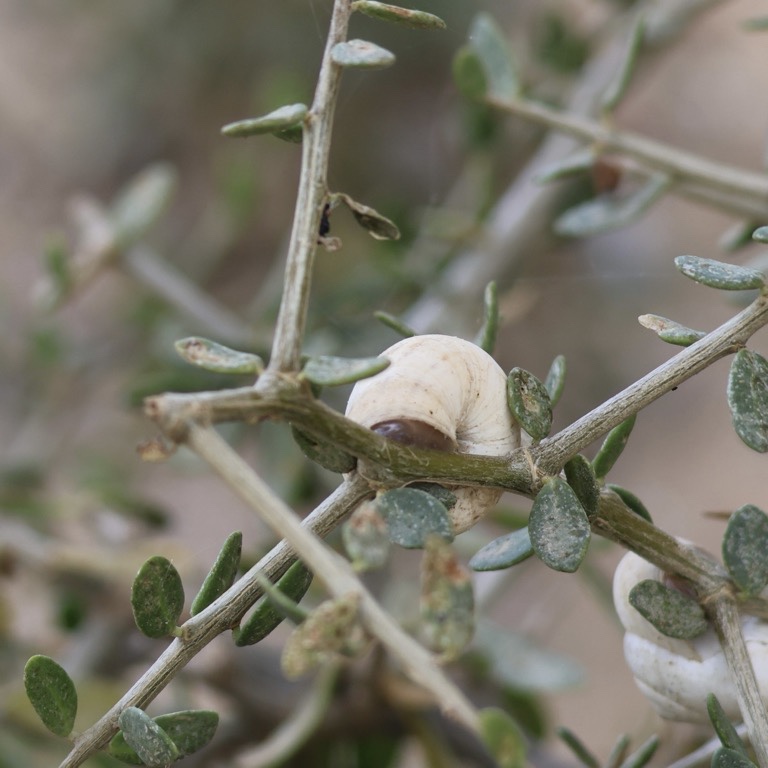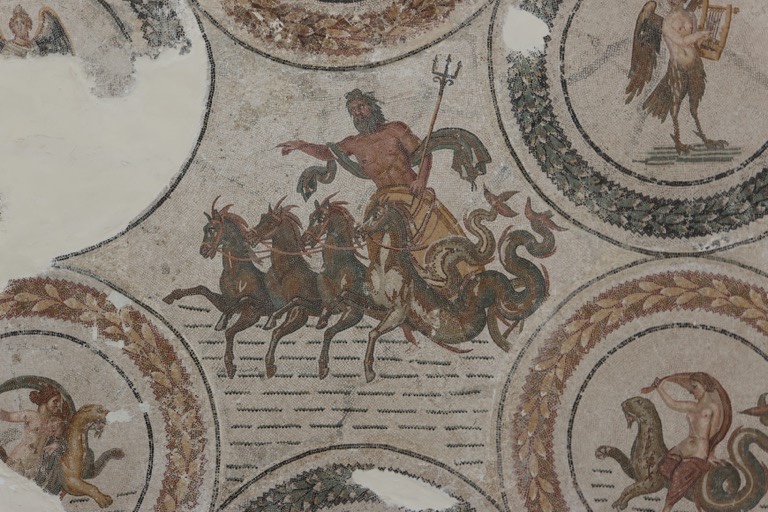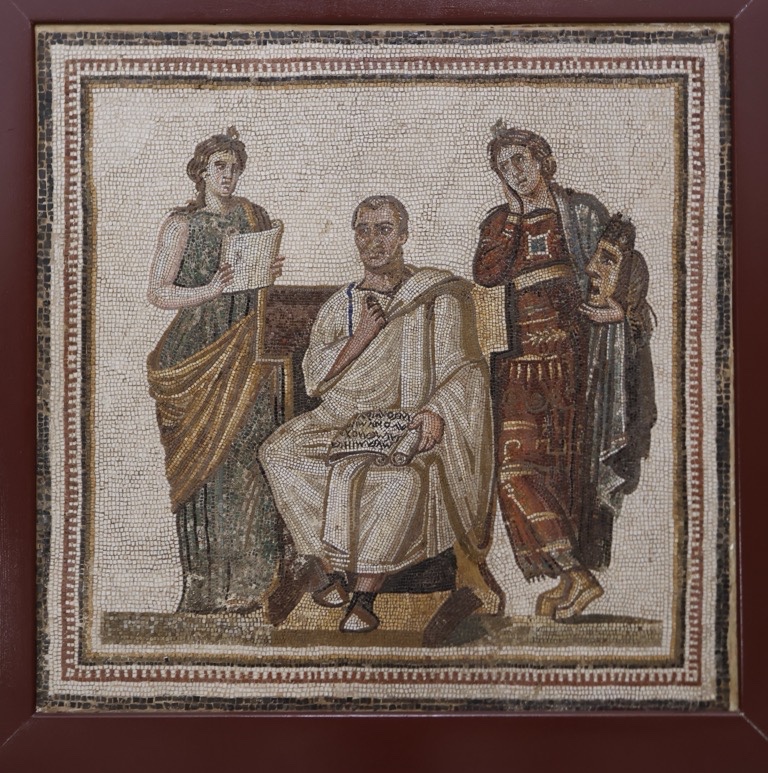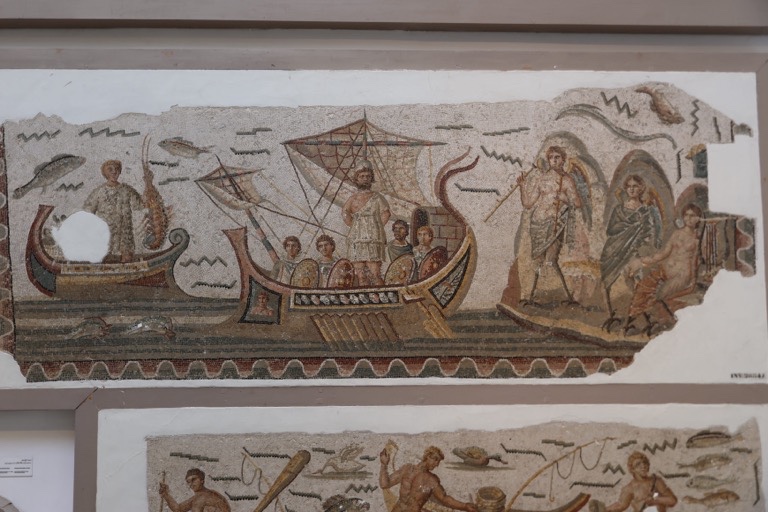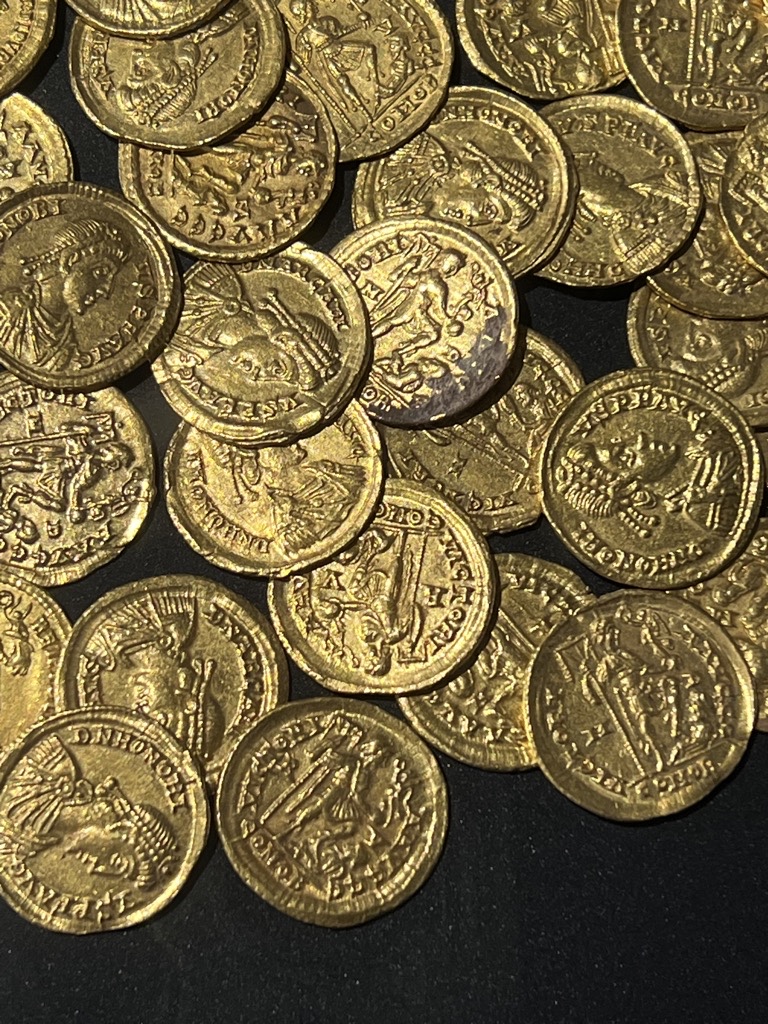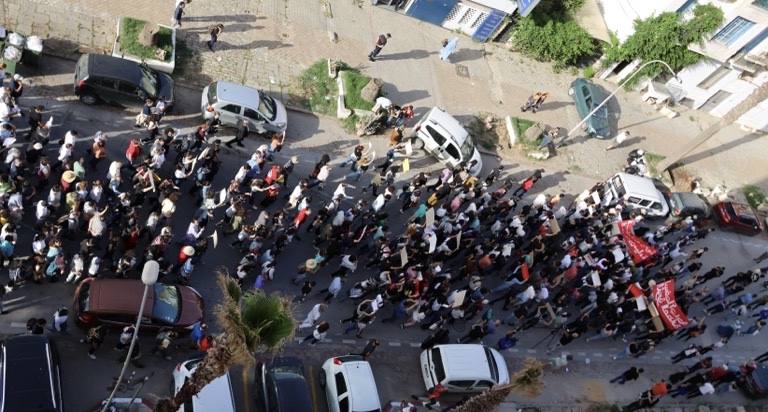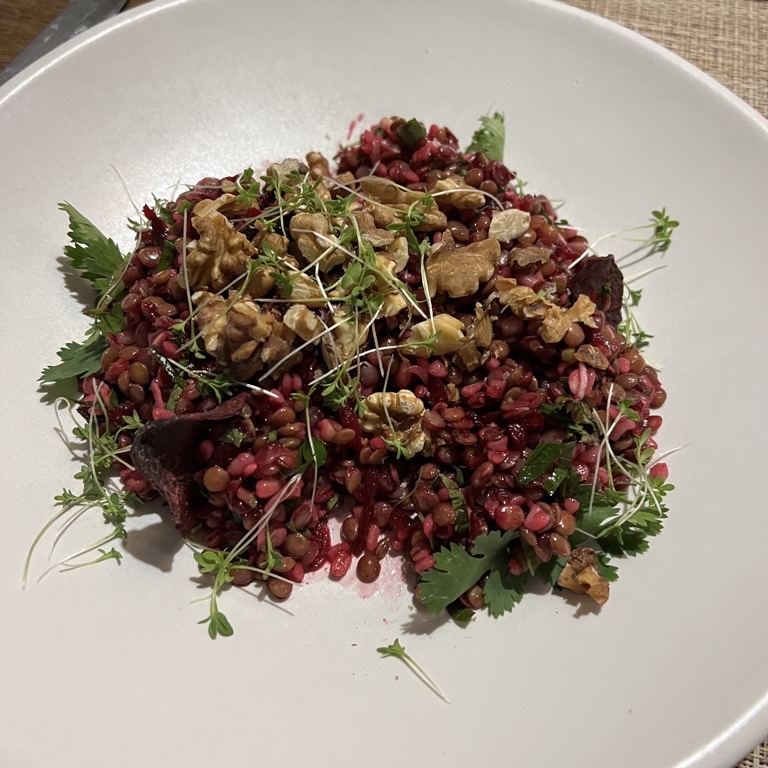on
Uthina
Today we got to breakfast at 7:30 am again for an 8:30 am departure by bus to the old Roman town of Uthina. It is known for its mosaics. Many of the nice mosaics have been moved to the Bardo Museum.
On the way there we passed under some powerlines that had nesting storks on them. We stopped long enough to get photos from the bus.
During the drive to Uthina, our guide told the story of the founding of Carthage.
Our first stop in Uthina is the arena. This was used around a dozen times a year for gladiator games.
This arena has the underground infrastructure to handle wild animals and lift the cages into the arena. We were able to visit this area.
We visited a large villa next, the mosaics from this villa were still in place, they hadn’t been moved to the museum.
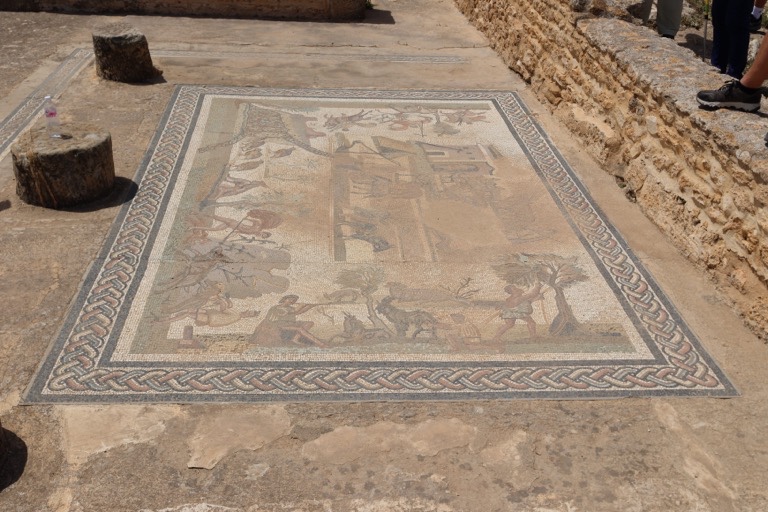
The blue colors were expensive, so only the very rich could afford them.
We visited the baths and then the capitol area of Uthina.
We also saw some birds while walking through Uthina.
The Helmeted Guineafowl is common south of the Sahara desert, but is rare north of the Sahara.
Olive Trees grow wild on the site, and we saw some tiny olives. Our guide said that there were enough spring rains to have many blossoms on the olive trees, so there likely will be a good crop this October.
There was a few olive orchards visible from the site, as well as wheat fields.
We stopped at the Zaghouan Roman aqueduct that carried water to Carthage. We’ll visit Carthage later in this trip.
I saw this bush with a bunch of snails crawling on it.
We drove back into a nice area of Tunis around the lake for lunch at La Goulette for lunch.
After lunch, we went to the Bardo Museum to see the mosaics that have been moved here from Uthina. We saw many, but here are a few that I was able to get good photos of.
This is the center of the largest mosaic in Tunisia.
Our guide told us that the island of the sirens is sometimes considered to be Jerba which is just off Tunisia. The Wikipedia article says Jerba is the land of the Lotus-eaters.
We had a little time to look around in the museum before it closed. I found an exhibit on the Chimtou hoard of gold coins.
When we arrived at the hotel in the late afternoon there were extra people and police hanging around. Later we heard and saw a protest go by the hotel. The Union of Tunisian Journalists has a building right next to the hotel and the protest was about the arrest and jailing of two journalists, Borhene Besayess and Moyrad Zeghidi, for one year. They had criticized the president and his policies.
Supper was on our own, but our guide recommended a restaurant just down the street, and we tried it. One of the courses we tried was a beet and lentil salad.
